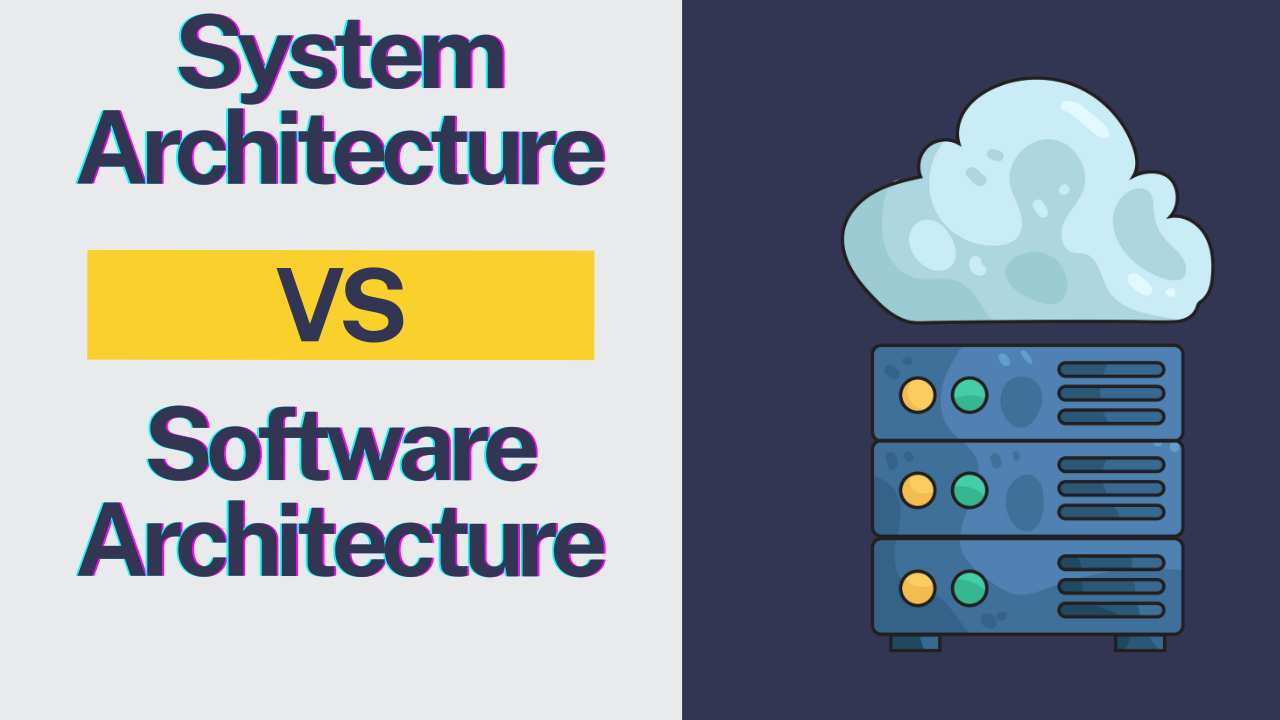
In the world of technology, terms like System Architecture and Software Architecture are often used, but their precise definitions and relationship can be confusing. Simply put, system architecture is the master blueprint for the entire solution, including hardware, software, and networking. In contrast, software architecture is a detailed blueprint for just the software portion of that solution.
Understanding this distinction is crucial for anyone involved in building and maintaining complex digital products.
The Master Blueprint: System Architecture
The System Architecture describes the entire technological ecosystem of a solution. It’s the high-level, comprehensive diagram that shows all the moving parts and how they interrelate, regardless of whether they are hardware or software. It defines the environment in which the software will live and operate.
System architecture decisions are typically strategic, focusing on the big picture, physical layout, and external dependencies.
Example: A Ride-Sharing Web Application (Uber)
For a ride-sharing application, the system architecture describes the entire universe it operates in:
- Users & Devices: The hardware (mobile phones, tablets, or desktop PCs) and the associated client-side software (the app or web browser) used by both drivers and riders.
- Networking: The infrastructure that connects everything, including the public internet, mobile networks, and the private network within the company’s data centers or cloud provider.
- Servers & Infrastructure: The physical or virtual machines that host the application code. This includes crucial components like load balancers (to distribute traffic), web servers, and API gateways.
- Databases: Where all critical data is stored—user profiles, ride history, payment information, and so on. This often involves a combination of different database types (e.g., a relational database for structured user data and a NoSQL database for real-time ride tracking).
- External Services: Integrations with essential third-party services like Google Maps for location tracking, a payment gateway (e.g., Stripe) for financial transactions, and a messaging service for notifications.
Key System Architecture Decisions include choosing the cloud provider (AWS, Azure, GCP), determining the necessary server capacity and geographical distribution, and selecting which external services to integrate with.
The Software Blueprint: Software Architecture
The Software Architecture focuses specifically and deeply on the software components within that established system. It is a more granular, detailed view of how the code is structured and how different parts of the application communicate internally. This architecture ensures the code is scalable, maintainable, and performs efficiently within the constraints set by the system architecture.
Example: The Ride-Sharing App’s Internal Structure
In a modern ride-sharing application, a common choice for the software architecture would be a microservices architecture. This breaks the application down into smaller, independent, and specialized services:
- User Service: Manages user profiles, authentication, and login processes.
- Ride-Matching Service: Executes the core logic of finding the nearest available driver for a rider’s request in real time.
- Payment Service: Handles all transactions, billing, and payment processing.
- Notifications Service: Manages and sends real-time alerts to both drivers and riders.
Key Software Architecture Decisions include:
- Architectural Pattern: Choosing between approaches like microservices versus a monolithic architecture.
- Communication: Defining how these independent services talk to each other (e.g., using REST APIs for synchronous requests or a message queue like Kafka for asynchronous communication).
- Technology Stack: Selecting the most appropriate programming languages and frameworks for each service (e.g., using Python for the complex ride-matching algorithm and Node.js for the highly responsive notifications service).
Summary of Roles
In essence, the System Architect designs the entire interconnected picture—the hardware, the networks, and the high-level relationship between the various software components. The Software Architect then takes the software part of that picture and designs its internal structure, ensuring it’s scalable, maintainable, and perfectly aligned with the overall system vision. Both roles are essential for transforming a business idea into a robust, functional, and successful digital product.
